SparkLAN Communications WUBR170GN 802.11b/g/n USB Dongle User Manual WUBR 170GN UM 20100826
SparkLAN Communications, Inc. 802.11b/g/n USB Dongle WUBR 170GN UM 20100826
User Manual

WUBR-170GN
Wireless-GN USB Dongle
User’s Manual
Version 1.0
1
Contents
1. Package Contents........................................................................................................... 3
2. WLAN Adapter Quick installation Guide.......................................................................... 4
3. Network Card Installation................................................................................................ 4
4. Connect to Wireless Access Point .................................................................................. 8
2
Copyright statement
No part of this publication may be reproduced, stored in a retrieval system, or transmitted in
any form or by any means, whether electronic, mechanical, photocopying, recording, or
otherwise without the prior writing of the publisher.
August 2010

3
1. Package Contents
Before you starting to use this wireless network card, please check if there’s anything missing
in the package, and contact your dealer of purchase to claim for missing items:
Package Contents
Please make sure you have the following in the box:
♦ Wireless-GN USB Dongle
♦ Protection Cap
♦ Quick installation guide
♦ User manual / device driver CDROM
Note: if anything is missing, please contact your vendor
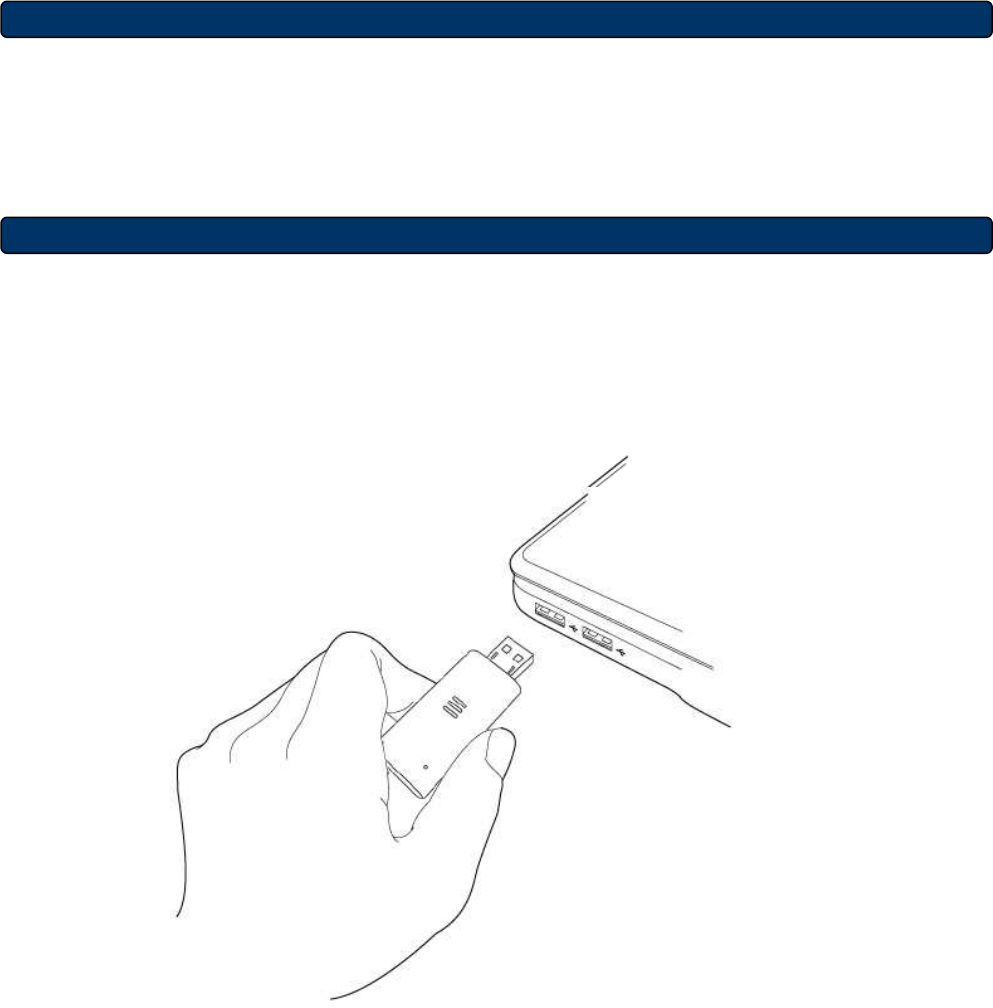
4
2. WLAN Adapter Quick installation Guide
Please follow the following instructions to use Ralink configuration utility to connect to
wireless access point.
3. Network Card Installation
1. Insert the USB wireless network card into an empty USB 2.0 port of your computer when
computer is switched on.
Never use force to insert the card, if you feel it’s stuck, flip the card over and try again.
2. The following message will appear on your computer, click ‘Cancel’.
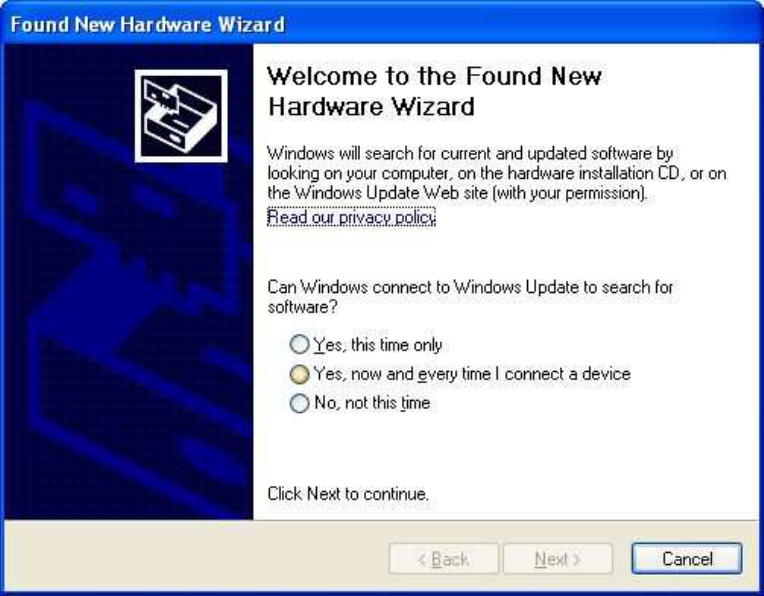
5
3. Turn “On” your computer. Insert the Driver CD then wait for the Autorun prompt like
below.
4. If Autorun does not work, please browse the CD content and double click the
“ Autorun.exe ”.
5. Click the “Driver” for beginning the installation.
6. Click “Next” and then follow the instructions on the screen to continue the installation.
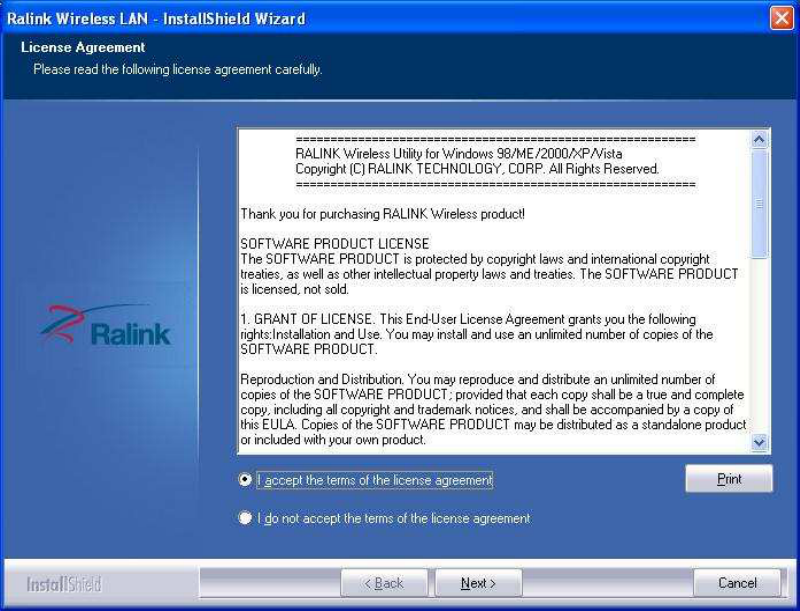
6
7. You can choose the configuration tool used to configure the wireless network card here.
It’s recommended to select ‘Ralink Configuration Tool’, which provides fully access to all
function of this wireless network card. If you prefer to use the wireless configuration tool
provided by Windows XP or Vista, please select ‘Microsoft Zero Configuration Tool’,then
click ‘Next’.
If you see ‘Found New Hardware’ message again, please ignore it and wait.
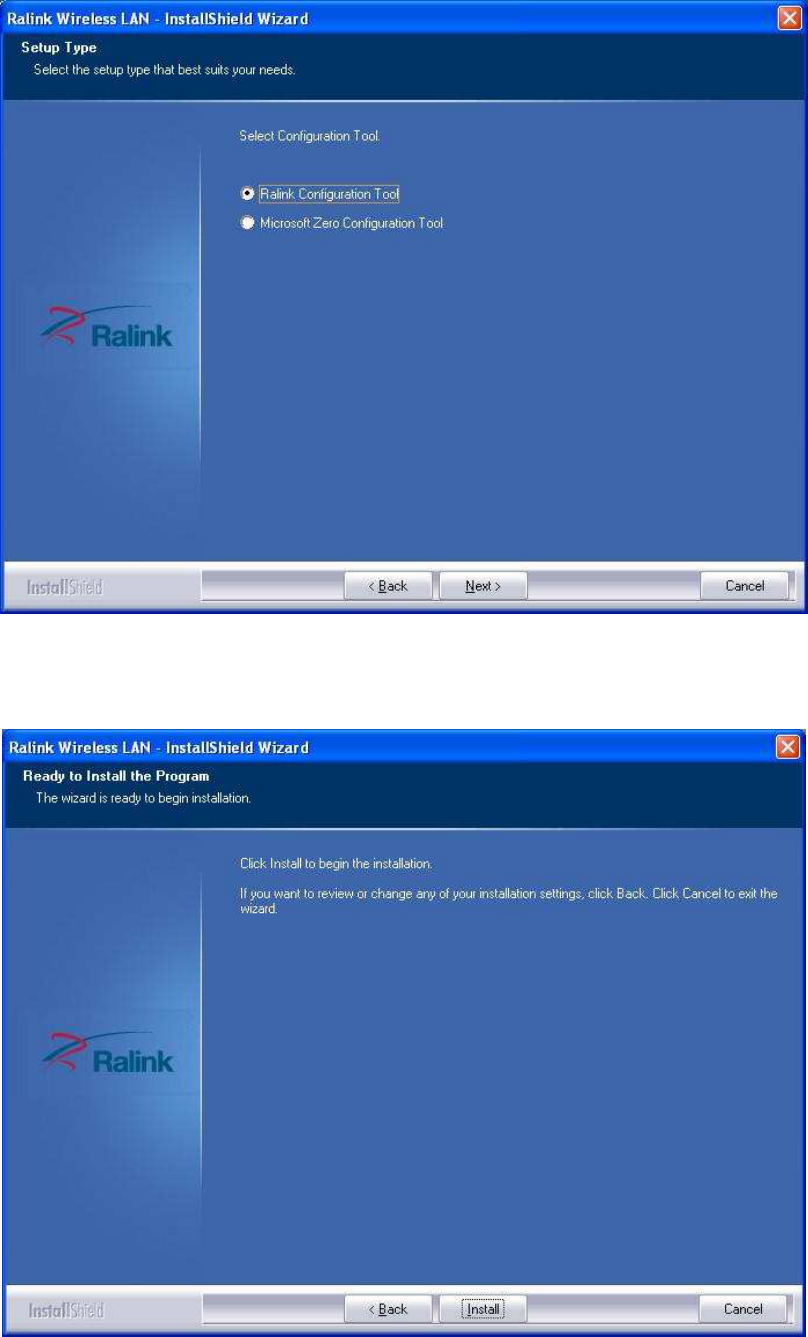
7
8. When you see this message, please click ‘Finish’ to complete the driver installation
process.
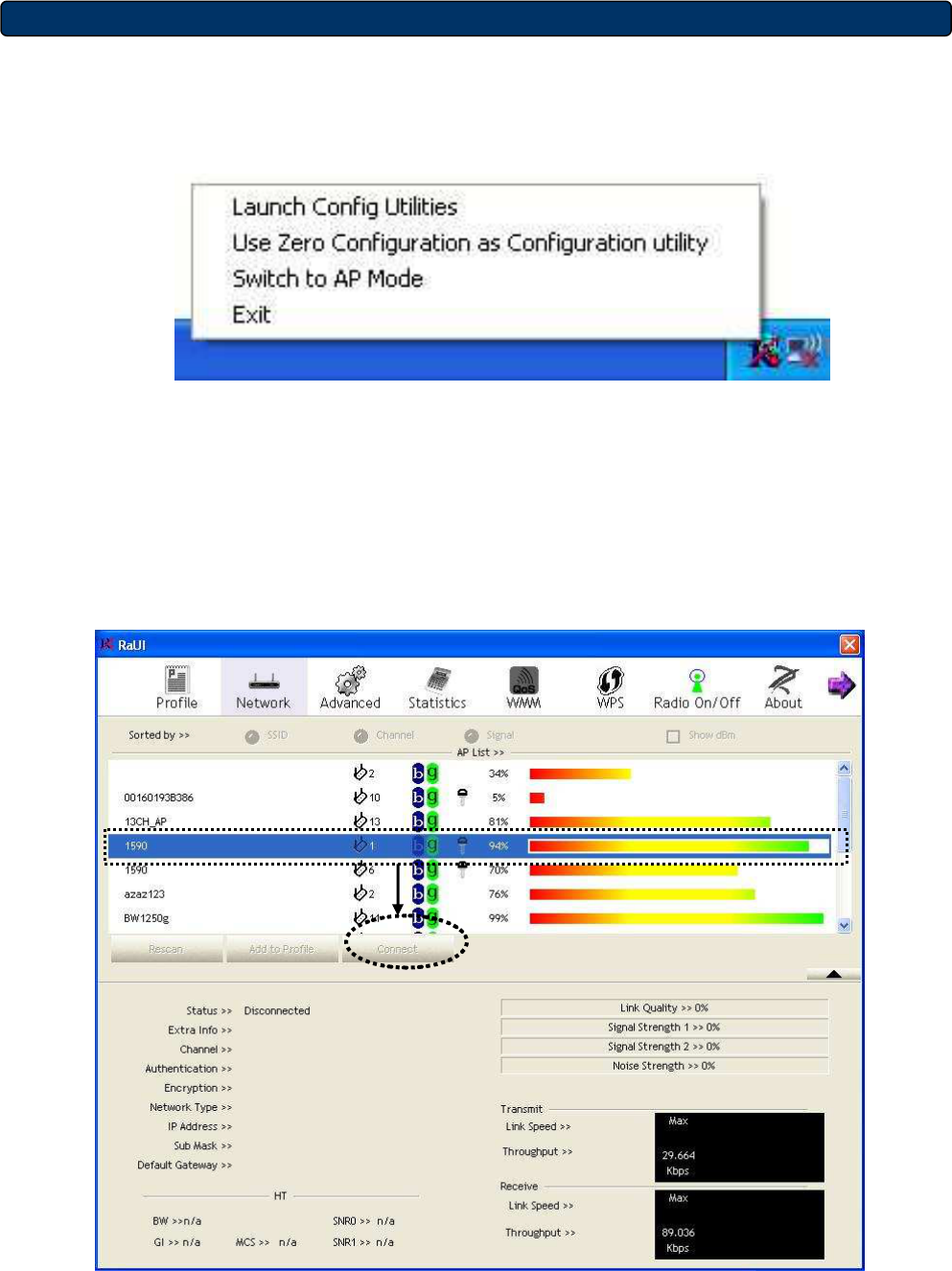
8
4. Connect to Wireless Access Point
1. After installation is complete, wireless configuration utility will be shown as an icon at
the lower-right corner of your windows desktop. Please click the icon by right mouse
key, and select ‘Launch Config Utilities’.
2. Configuration utility will scan for wireless access points automatically, and all found
access points will be displayed. Please select an access point you wish to connect,
and click ‘Connect’.
If the wireless access point you want to connect does not show here, please click ‘Rescan’
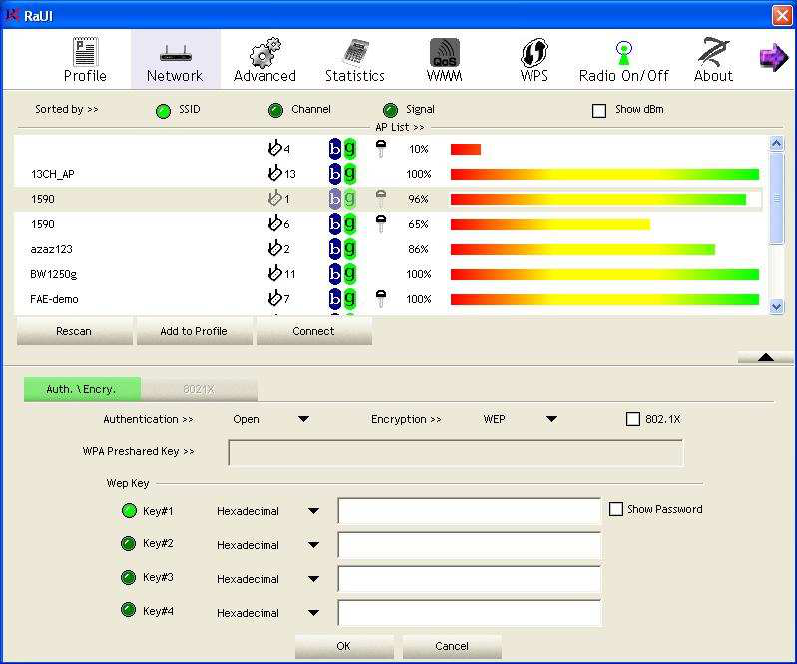
9
3. If the wireless access point uses encryption, you have to input WEP passphrase or
WPA preshared key. Please ask the owner of the wireless access point you want to
connect, and input the correct passphrase / preshared key here, then click ‘OK’. If the
value you inputted here is wrong, you will not be able to connect to wireless access
point.
Authentication type is selected automatically, please don’t change it.

10
4. If the wireless access point is successfully connected, you’ll see a ‘‘Status’ (SSID and
MAC address of the wireless access point or wireless device you connected to)
message displayed at the lower-left corner of wireless configuration utility window.
Click ‘X’ to exit.
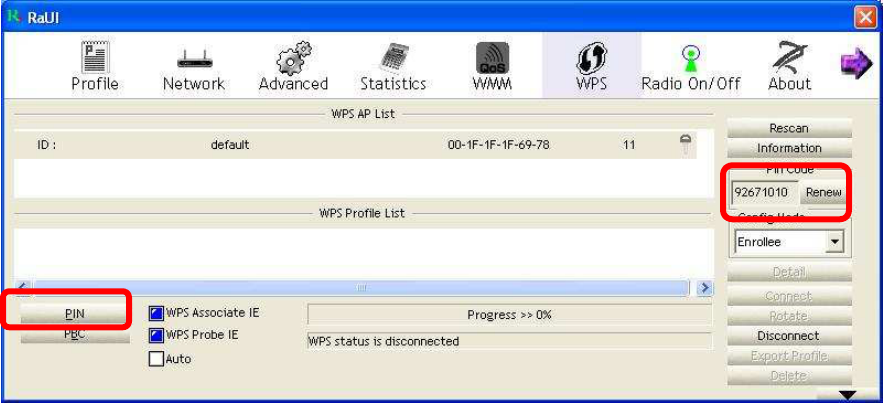
11
Federal Communication Commission Interference Statement
This equipment has been tested and found to comply with the limits for a Class B digital device,
pursuant to Part 15 of the FCC Rules. These limits are designed to provide reasonable protection
against harmful interference in a residential installation. This equipment generates, uses and can
radiate radio frequency energy and, if not installed and used in accordance with the instructions,
may cause harmful interference to radio communications. However, there is no guarantee that
interference will not occur in a particular installation. If this equipment does cause harmful
interference to radio or television reception, which can be determined by turning the equipment off
and on, the user is encouraged to try to correct the interference by one of the following measures:
• Reorient or relocate the receiving antenna.
• Increase the separation between the equipment and receiver.
• Connect the equipment into an outlet on a circuit different from that to which the receiver is
connected.
• Consult the dealer or an experienced radio/TV technician for help.
FCC Caution: Any changes or modifications not expressly approved by the party responsible for
compliance could void the user's authority to operate this equipment.
This device complies with Part 15 of the FCC Rules. Operation is subject to the following two
conditions: (1) This device may not cause harmful interference, and (2) this device must accept
any interference received, including interference that may cause undesired operation.
Federal Communication Commission (FCC) Radiation Exposure Statement
This EUT is compliance with SAR for general population/uncontrolled exposure limits in ANSI/
IEEE C95.1-1999 and had been tested in accordance with the measurement methods and
procedures specified in OET Bulletin 65 Supplement C.